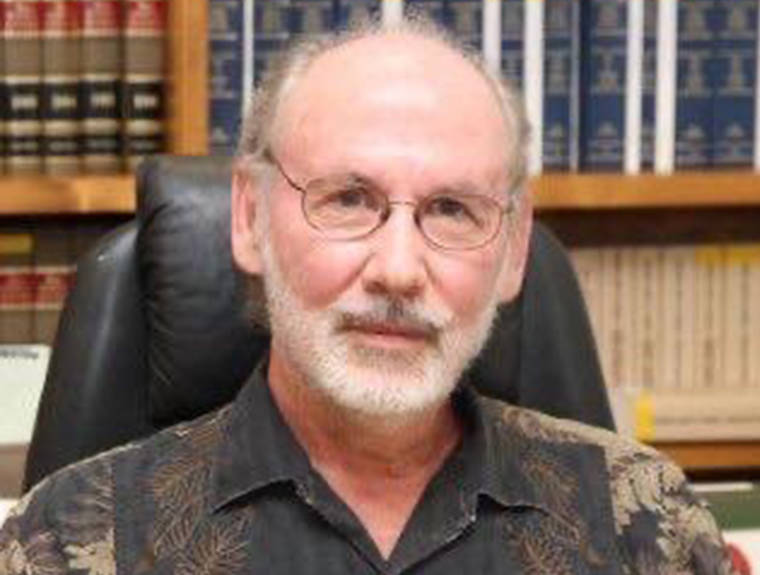A retired judge appointed by the state Supreme Court to oversee a planned release of inmates from the state’s prisons and jails because of the COVID-19 pandemic told lawmakers Thursday that the process is “a work in progress.”
Testifying before the Senate Special Committee on COVID-19, Daniel R. Foley said the process, ordered by the high court following a petition by the Office of the Public Defender, is going more smoothly on the neighbor islands than on Oahu.
“Where the population is smaller … the culture is different,” Foley said. “It’s a much more collaborative effort where prosecutors and public defenders are working together to comb through these lists to see who they don’t object to or who they can (free) with certain conditions for release and others who are inappropriate under any conditions.”
Foley, who released a 44-page report Thursday, a week after his appointment, said the process has been “more contentious in Honolulu.”
“It’s a larger population. Demographics are different, the culture is different,” he said. “… And the process can vary from island to island, but the judge is the gatekeeper. Nobody’s released without that judge saying OK and under what conditions. That’s the way it’s always been; that’s the way it should be, and we’re just trying to expedite this process because of the current conditions.”
As of Thursday, 548 inmates have been released from the state’s jails since March 2, and all but Hawaii Community Correctional Center in Hilo reported populations below their stated operational capacity. Even after the release of 91 inmates, the chronically overcrowded HCCC reported an inmate population of 304, 78 above its operational capacity of 226 inmates.
“The operational capacities were set in 2001 (when the) coronavirus and pandemic were not an issue,” Foley said.
He added that the Corrections Population Management Commission asked the Department of Public Safety “to work with them and review the operational capacities and move them downward, not permanently … but in response to the pandemic.”
Foley acknowledged that even during the current state of emergency, the release of prisoners is controversial.
“People have different views whether that should be done and how it should be done,” he said. “And as the Hawaii Supreme Court put it in its order appointing me a week ago, public health issues and public safety issues should be considered in balance.”
Hawaii County Prosecutor Mitch Roth told the Tribune-Herald that the release of inmates is necessary to protect them and correctional workers “from what is happening in places like New York, New Jersey and Louisiana.”
“We didn’t want a mass release. We agree we need to bring the number down, because if the virus broke out in the jail, with 408 people plus another 150 that work there, that would be a danger to our community, as well,” Roth said. “And so we’ve been doing a very detailed balancing act. We’ve been looking for other places they can be housed, for example, like Kulani or the Federal Detention Center (on Oahu).
“We understand the Federal Detention Center may be willing to take some of the jail’s inmates. So we’re trying to figure out other ways to make sure that people who get out get (COVID-19) screening before they leave, make sure they have a place to go … under the condition that they follow the rules of the stay-at-home order.
“But we’re also trying to make sure that the most dangerous, the most serious and the most persistent offenders stay in.”
Roth expressed some frustrations, however.
“One person we objected to was released, went out and committed another crime. We asked for them to maintain bail, and the court released that person again,” he said
Sen. Kurt Fevella, a Leeward Oahu Republican, voiced concerns he said were raised by his constituents, such as release of homeless inmates “without an ID, no birth certificate, no Social Security (number) no address, into the streets of our communities.”
“Instead of a revolving door with a big circle, why don’t we all collaborate and get together?” Fevella said. “What this is is a crisis, not only for the pandemic …. We’ve seen the prisons; we know they’re crowded. But releasing 400 people into the community — where are they gonna go?”
Foley replied that prosecutors are trying to ensure inmates being released “have a place to go (and) are being monitored, and the release is not inconsistent with public safety.” He added that he’s reached out to advocates for inmates and the homeless to find temporary housing for those released.
Department of Public Safety Director Nolan Espinda told the committee that despite the reduction in incarcerated inmates, “no one was released en masse.”
He said nine inmates from HCCC and two from Maui Community Correctional Center who were serving intermittent jail time on weekends “are no longer coming in … two days at a time.”
According to Espinda, no inmate or worker at any of the state’s jails or prisons has tested positive for COVID-19 “so far.”
He added that 94 of the state’s inmates have been moved to the Federal Detention Center near Daniel K. Inouye International Airport in Honolulu.
“We’ve got good news, that effective Monday, they’ll be accepting up to 100 more,” he said.
Espinda said prisoners working in the Hawaii Correctional Industry Program are sewing cloth masks “to be distributed first to our institutional workers and to our inmates, and then to other state agencies who may be desirous of it.”
“We’re not in routine times, anymore,” he said. “… In today’s environment, everybody wants a level of (personal protective equipment) and the need for soap to wash their hands and hand sanitizers have been multiplied by hundreds of percentages.”
Email John Burnett at jburnett@hawaiitribune-herald.com.









